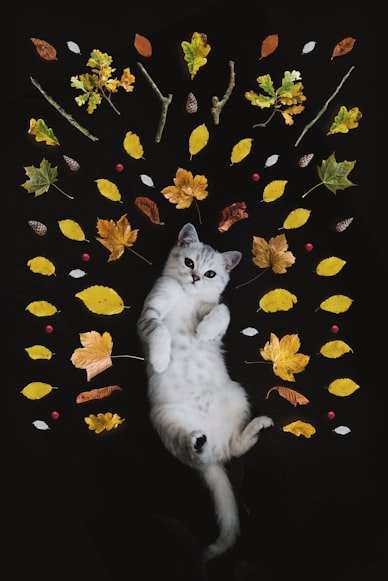How to Care for Cat Wounds

As a responsible pet owner, understanding how to treat cat wounds is crucial for their health and well-being. Cats may encounter various types of injuries, ranging from minor scratches to severe lacerations. Knowing how to respond promptly and effectively can minimize pain, prevent infection, and speed up healing.
Step 1: Assess the Wound
Before attempting to treat any wound, assess its severity. If the wound is:
- Small and superficial (e.g., a scratch)
- Not bleeding heavily
- Not swollen or infected
You can proceed with home care. However, if the wound is:
- Deep or large
- Bleeding profusely
- Swollen or discolored
- Shows signs of infection (e.g., redness, swelling, discharge)
Seek veterinary attention immediately.
Step 2: Clean the Wound
Clean the wound to remove debris and prevent infection. Use warm water and a soft, sterile cloth to gently wipe the area around the wound. Clean from the center outwards to avoid spreading any bacteria. If necessary, use a sterile saline solution or a gentle antiseptic solution to flush the wound.
Step 3: Stop Bleeding
Apply direct pressure to the wound with a clean cloth or gauze pad. Do not pull on the cloth, as it may worsen the bleeding. Hold for 5-10 minutes until the bleeding slows or stops. If bleeding persists, seek veterinary attention.
Step 4: Apply an Antiseptic
Apply a mild antiseptic, such as hydrogen peroxide or chlorhexidine, to the cleaned wound. Use a cotton ball or gauze pad to gently spread the antiseptic over the area. This will help prevent infection.
Step 5: Dress the Wound
If the wound is large or deep, a bandage may be necessary to protect it and keep it clean. Use a sterile gauze pad as a primary dressing and secure it with self-adhesive tape or a wrap. Do not apply cotton directly to the wound, as it may stick and cause irritation.
Step 6: Monitor the Wound
Observe the wound daily and watch for signs of infection, such as redness, swelling, discharge, or pain. Change the bandage regularly to keep it clean and dry. If any of these symptoms appear, seek veterinary attention.
Precautions
- Do not use alcohol or iodine to clean cat wounds, as they can be irritating and delay healing.
- Avoid over-cleaning the wound, as this can damage new tissue.
- Do not use human bandages on cats, as they may not stick properly or become too tight.
- If your cat is not cooperative or shows signs of aggression when cleaning the wound, seek professional assistance.
Prevention
- Keep your cat’s vaccinations up to date to reduce the risk of infection.
- Trim your cat’s nails regularly to prevent scratches.
- Provide your cat with a safe and secure environment to minimize the risk of accidents.
By following these steps, you can effectively care for cat wounds and promote their healing. Remember to seek veterinary attention for severe wounds or if you notice any signs of infection.
Gather Supplies:

Cats, like all animals, are prone to getting wounds. These can be caused by fights with other cats, accidents, or even just scratching themselves on something sharp. While most cat wounds are not serious, it is important to know how to treat them properly to prevent infection and promote healing.
Gather Supplies
Before you start treating your cat’s wound, you will need to gather the following supplies:
- Antiseptic solution (e.g., hydrogen peroxide, chlorhexidine)
- Sterile gauze pads
- Tweezers
- Nail clippers
- Pain medication (if necessary)
Clean the Wound
The first step in treating a cat wound is to clean it thoroughly. This will help to remove any dirt, debris, or bacteria that could cause infection. To clean the wound, follow these steps:
- Use a sterile gauze pad to gently wipe away any dirt or debris from the wound.
- Apply a small amount of antiseptic solution to a clean gauze pad and gently wipe the wound.
- Repeat steps 2 and 3 until the wound is clean.
Control the Bleeding
If the wound is bleeding heavily, you will need to control the bleeding before you can clean it. To do this, apply pressure to the wound with a clean gauze pad. If the bleeding does not stop after a few minutes, you may need to take your cat to the vet.
Remove Any Foreign Objects
If there are any foreign objects in the wound, such as thorns, splinters, or glass, you will need to remove them. To do this, use a pair of tweezers to gently remove the object. If the object is embedded in the skin, you may need to take your cat to the vet to have it removed.
Trim the Hair Around the Wound
If the hair around the wound is long, you will need to trim it so that it does not get in the way of cleaning and healing. To do this, use a pair of nail clippers to carefully trim the hair around the wound.
Apply Pain Medication
If your cat is in pain, you can give them a pain medication. Aspirin is a common pain medication that is safe for cats. However, it is important to follow the dosage instructions carefully, as aspirin can be toxic to cats if given in too high of a dose.
Cover the Wound
Once the wound is clean and dry, you can cover it with a sterile gauze pad. This will help to protect the wound from infection and promote healing. You can secure the gauze pad in place with a bandage or tape.
Monitoring the Wound
It is important to monitor the wound closely for any signs of infection. These signs include:
- Redness
- Swelling
- Discharge
- Pain
If you notice any of these signs, you should take your cat to the vet.
Prevention
The best way to treat cat wounds is to prevent them from happening in the first place. Here are a few tips to help prevent cat wounds:
- Keep your cat indoors or supervised when outdoors.
- Trim your cat’s nails regularly.
- Avoid letting your cat play with sharp objects.
- If your cat does get a wound, treat it promptly to prevent infection.
Restrain Cat:

Introduction:
Cats are curious and playful creatures, which often lead them to encounter minor wounds. As a pet owner, it’s essential to know how to treat cat wounds properly to ensure their health and well-being. This article provides a step-by-step guide on how to approach treating cat wounds safely and effectively.
Step 1: Restrain the Cat
- Wrap the cat in a towel or blanket to prevent it from scratching or biting.
- Secure the cat’s head to prevent it from biting. You can use a muzzle or have someone help you hold its head gently.
Step 2: Assess the Wound
- Examine the wound for signs of bleeding, swelling, or infection.
- Superficial wounds are usually minor and can be treated at home.
- Deep or severe wounds may require veterinary attention.
Step 3: Clean the Wound
- Gently wash the wound with warm water and a mild antiseptic solution.
- Remove any dirt or debris from the wound.
- Avoid using strong detergents or chemicals on the wound.
Step 4: Control Bleeding
- If the wound is bleeding, apply direct pressure to the site using a clean towel or gauze.
- Elevate the cat’s injured limb if possible.
- Do not remove clotting.
Step 5: Protect the Wound
- Apply a small amount of an antibiotic ointment to the wound.
- Cover the wound with a sterile bandage or gauze to protect it from further contamination.
- Change the bandage regularly to keep it clean and dry.
Step 6: Monitor the Wound
- Observe the wound for signs of infection, such as redness, swelling, or discharge.
- If any signs of infection appear, contact your veterinarian immediately.
Step 7: Seek Veterinary Attention When Necessary
- If the wound is deep, severe, or does not show signs of improvement within a few days, seek veterinary attention.
- Veterinary care is also necessary for wounds that involve muscles, tendons, or other major structures.
Additional Tips:
- If possible, keep your cat calm and relaxed during the treatment process.
- Using gloves when handling the wound is recommended to prevent infection.
- Do not give your cat any over-the-counter or human medications without consulting your veterinarian.
- Keep the wound clean and dry to promote healing.
Conclusion:
Treating cat wounds properly is important for their health and well-being. By following these steps, you can help your furry companion heal quickly and safely. However, always consult your veterinarian if the wound is severe or shows signs of infection.
Clean the Wound:

A cat’s curious nature can sometimes lead to injuries, and knowing how to treat wounds properly is essential for their well-being. Minor wounds can be treated at home, but more severe injuries require veterinary attention. Here’s a step-by-step guide to treating a cat wound:
Step 1: Safety First
Before handling any wound, ensure your own safety by wearing gloves or using a clean towel. Do not touch the wound directly with your bare hands, as this can introduce bacteria.
Step 2: Clean the Wound
- Remove debris: Use tweezers to gently remove any visible dirt, hair, or debris from the wound. Avoid digging into the wound or applying pressure.
- Apply antiseptic solution: Apply a mild antiseptic solution, such as diluted chlorhexidine or iodine, gently to the wound using a cotton ball or gauze pad. Avoid using harsh chemicals like hydrogen peroxide, as they can damage the tissue.
Step 3: Control Bleeding
If the wound is bleeding heavily, apply direct pressure with a clean cloth or gauze pad until the bleeding stops. Do not use any type of tourniquet.
Step 4: Protect the Wound
Once the bleeding is controlled, cover the wound with a clean, non-stick bandage. If you do not have bandages, you can use a clean piece of cloth or gauze held in place with tape.
Step 5: Monitor the Wound
Observe the wound daily for signs of infection, such as redness, swelling, or discharge. If you notice any of these symptoms, seek veterinary attention promptly.
When to Seek Veterinary Attention
While minor wounds can be treated at home, it’s important to seek veterinary attention in the following cases:
- The wound is deep or gaping
- The wound is bleeding heavily and does not stop with direct pressure
- The wound is located on a sensitive area, such as the face or genitals
- The wound shows signs of infection, such as redness, swelling, or discharge
- The cat is lethargic, not eating, or vomiting
Additional Tips:
- Keep the cat calm and comfortable during the treatment process.
- If the cat resists treatment, do not force it. Allow it to settle down and try again later.
- Do not use human medications on cats without veterinary approval.
- Prevention is always better than cure. Keep your cat’s indoor environment safe to minimize the risk of injuries.
Trim Hair:

As a responsible pet owner, it’s crucial to know how to treat cat wounds effectively to ensure your furry friend’s well-being. Here’s a comprehensive guide to help you with this essential task:
1. Trim Hair:
- Use sharp nail clippers to carefully trim any hair around the wound.
- Removing hair will help prevent infection and allow for better visibility of the injury.
2. Clean the Wound:
- Cleanse the wound gently with warm water or a mild antiseptic solution.
- Use a sterile gauze pad or cotton ball to dab the wound, avoiding scrubbing or scraping.
- Allow the wound to air dry completely.
3. Apply Pressure to Stop Bleeding:
- If the wound is bleeding, apply gentle pressure with a sterile gauze pad for several minutes.
- Do not remove the gauze prematurely, as it may dislodge any clots and cause further bleeding.
4. Cover the Wound:
- Once the bleeding has stopped, cover the wound with a non-stick bandage or clean cloth.
- Secure the bandage loosely to allow for air flow and prevent infection.
- Change the bandage daily to keep it clean and dry.
5. Monitor the Wound:
- Check the wound daily for signs of infection, such as redness, swelling, or discharge.
- If you notice any of these symptoms, contact your veterinarian immediately.
6. Keep Your Cat Indoors:
- After treating the wound, keep your cat indoors to prevent further injury or infection.
- Restrict their activity to minimize movement and avoid stressing the wound.
7. Administer Medications:
- If your veterinarian prescribes antibiotics or pain relievers for your cat, follow the instructions carefully.
- Give your cat the medication on time and for the full duration prescribed.
8. Signs of Serious Injury:
- If your cat has a puncture wound or a wound that is deep, large, or bleeding heavily, seek veterinary attention immediately.
- These wounds may require sutures or other medical intervention to prevent complications.
Remember, always consult with your veterinarian if you have any concerns about your cat’s wound or if it doesn’t appear to be healing properly. By following these steps, you can help your feline companion recover quickly and safely from any injuries they may encounter.
Apply Pressure:
As a loving pet owner, it’s crucial to know how to provide proper care for our feline companions, especially when they sustain injuries. Wounds, whether severe or minor, require prompt attention to prevent infection and promote healing. This guide will provide you with step-by-step instructions on how to effectively treat cat wounds.
Step 1: Assess the Wound
Before treating the wound, assess its severity. Minor wounds, such as scratches or superficial cuts, usually require minimal intervention. However, deeper wounds, puncture wounds, or wounds that show signs of infection necessitate veterinary attention.
Step 2: Apply Pressure
If the wound is bleeding, apply gentle pressure to stop the bleeding. Use sterile gauze or a clean, absorbent cloth. Cover the wound and press down gently for several minutes. Avoid applying excessive pressure, as this can damage the surrounding tissue.
Step 3: Clean the Wound
Once the bleeding has subsided, gently clean the wound. Use lukewarm water and mild soap or a pet-friendly wound cleaner. Avoid using harsh chemicals or alcohol, which can irritate the wound. Rinse the wound thoroughly with clean water. If the wound has any debris, such as dirt or hair, gently remove it using sterile tweezers.
Step 4: Apply Antiseptic
After cleaning the wound, apply an antiseptic solution to prevent infection. Use pet-friendly antiseptics, such as diluted iodine solution (1 part iodine to 9 parts water) or chlorhexidine. Apply the antiseptic gently around the wound using sterile gauze or a cotton ball.
Step 5: Protect the Wound
Cover the wound with a sterile bandage or gauze to protect it from dirt and contaminants. If the wound is on a movable area, such as a limb, use a wrap or butterfly bandage to secure the dressing. Make sure the bandage is snug but not too tight.
Step 6: Check Regularly
Monitor the wound regularly for signs of infection or healing. Signs of infection include redness, swelling, pain, and discharge. If you notice any of these symptoms, contact your veterinarian immediately.
Step 7: Change the Dressing
Change the bandage or dressing every 12-24 hours, or as directed by your veterinarian. Avoid over-bandaging the wound, as this can suffocate the tissue and prevent proper healing.
Step 8: Administer Medication
If the wound is severe or infected, your veterinarian may prescribe antibiotics or pain medication. Follow the veterinarian’s instructions carefully and complete the entire course of treatment.
When to Seek Veterinary Attention
Seek immediate veterinary attention if the wound:
- Is deep or puncture-shaped
- Shows signs of infection
- Is located on the face or near the eyes
- Has caused significant bleeding
- Has not healed within a few days
Conclusion
By following these steps, you can effectively treat minor cat wounds and promote their healing. However, it’s essential to remember that severe or infected wounds require professional veterinary care. With proper attention and care, you can help your feline companion recover quickly and comfortably.
Control Pain:
Control Pain:
Pain is a common symptom of wounds in cats, and it can prevent them from healing properly. If your cat is experiencing pain, it is important to administer pain medication as prescribed by a veterinarian.
Do not give over-the-counter pain medication to cats without veterinary approval. Many human pain relievers, such as ibuprofen and acetaminophen, are toxic to cats and can cause serious health problems.
Veterinarians will typically prescribe pain medication specifically formulated for cats, such as:
- Buprenorphine (Buprenex)
- Fentanyl (Duragesic)
- Tramadol (Ultram)
These medications can be administered orally, transdermally, or intravenously, depending on the cat’s condition and the veterinarian’s preference.
It is important to follow the veterinarian’s instructions carefully when administering pain medication to your cat. Do not exceed the recommended dosage or frequency, and do not give your cat pain medication for longer than prescribed.
If your cat’s pain medication is not providing adequate relief, or if the pain worsens, it is important to contact your veterinarian immediately.
Monitor the Wound:
When treating a cat wound, it is crucial to monitor its progress to ensure proper healing and prevent infection. Here’s how to do it:
1. Observe the Wound Daily:
Check the wound area daily for any changes in appearance or behavior. Note any signs of:
- Redness: Increased redness around the wound may indicate inflammation or infection.
- Swelling: Swelling can develop around the wound due to fluid accumulation or tissue damage.
- Discharge: Any discharge, whether bloody, yellow, or greenish, could indicate infection.
2. Contact the Veterinarian Immediately:
If you observe any of the following symptoms, contact your veterinarian immediately:
- Redness or swelling that worsens or spreads: This could be a sign of infection.
- Excessive discharge with a foul odor: Discharge from a wound can be a sign of infection and may require antibiotics.
- Bleeding that does not stop: Persistent bleeding may require medical attention to control.
- Pain or discomfort: If your cat is limping, holding the injured area, or vocalizing in pain, it may need immediate medical care.
Importance of Monitoring:
Monitoring the wound helps identify any potential complications early on. By doing so, you can:
- Catch infections before they become severe.
- Prevent further tissue damage.
- Ensure proper healing and recovery.
- Avoid the need for more invasive treatments.
Remember, if you have any concerns or notice any unusual signs, do not hesitate to contact your veterinarian. Prompt medical attention can help ensure your cat’s well-being and a successful recovery.
Change Bandaging:
When treating a cat’s wound, it is essential to keep it clean and protected from infection. A bandage provides a barrier against dirt and debris while allowing the wound to breathe and heal.
Materials You’ll Need:
- Clean washcloth or gauze
- Antiseptic solution
- Bandage materials (sterile gauze, bandage tape or wrap)
Instructions:
-
Gather your materials: Ensure you have everything you need to change the bandage safely and effectively.
-
Gently clean the wound: Use a clean washcloth or gauze soaked in an antiseptic solution to gently wipe away any dirt or debris around the wound. Do not use soap and water, as this can irritate the wound.
-
Apply a new bandage: Cut a piece of sterile gauze slightly larger than the wound and gently place it over the wound. Secure the gauze with bandage tape or a wrap. Do not wrap the bandage too tightly, as it can restrict blood flow.
-
Change the bandage daily: Unless otherwise instructed by your veterinarian, change the bandage daily to keep the wound clean and promote healing. If the bandage becomes wet, dirty, or loose, change it sooner.
-
Monitor the wound: Observe the wound daily for any signs of infection, such as redness, swelling, or discharge. If you notice any unusual changes, contact your veterinarian promptly.
Tips:
- Do not remove the bandage without guidance from your veterinarian.
- Keep the wound dry and free from moisture.
- If the bandage is sticking to the wound, gently moisten it with sterile saline before removing it.
- Do not apply any ointments or creams to the wound unless directed by your veterinarian.
- Restrict the cat’s activity to prevent further injury to the wound.
By following these instructions, you can help your cat’s wound heal properly and prevent complications. If you have any questions or concerns, do not hesitate to contact your veterinarian for further guidance.

















